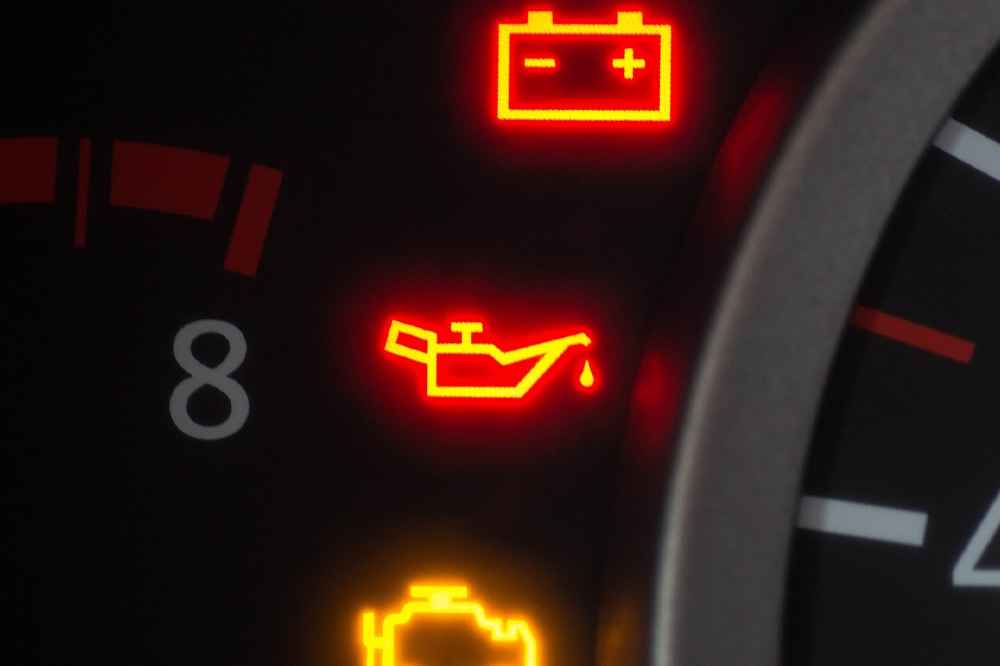Iridium spark plugs should be changed every 60,000-100,000 miles. Spark plugs play an essential role in the functionality of an engine.
They ignite the fuel mixture in the combustion chamber, causing the engine to start and run. Iridium spark plugs are known for their durability and longevity, making them a popular choice for modern vehicles. However, like all spark plugs, they eventually wear out and require replacement.
The typical lifespan of an iridium spark plug is between 60,000 and 100,000 miles. However, this lifespan can be affected by several factors, including the make and model of the vehicle, driving conditions, and the quality of the spark plugs. To ensure your engine is running smoothly, it’s crucial to replace the spark plugs at the recommended intervals.
Understanding Iridium Spark Plugs
Definition And Properties Of Iridium Spark Plugs
Iridium spark plugs are a type of spark plug that uses a rare, silvery-white metal called iridium to create a spark. Iridium has a higher melting point than platinum, which makes it ideal for use in spark plugs. These spark plugs have a longer lifespan than other types of spark plugs, thanks to their durability and resistance to wear and tear.
- Iridium has a melting point of 4,430°f, which is higher than platinum and other metals
- Iridium is less likely to melt or corrode, resulting in a longer lifespan than other spark plugs
- Iridium spark plugs can produce more consistent sparks, which can improve engine performance
Comparison With Other Types Of Spark Plugs (Copper, Platinum, Etc.)
Iridium spark plugs have a number of advantages over other types of spark plugs, such as copper and platinum.
- Copper spark plugs are the most basic type of spark plug and are typically the least expensive. However, copper wears down quickly and requires frequent replacement.
- Platinum spark plugs last longer than copper spark plugs, but not as long as iridium spark plugs. They are also less expensive than iridium spark plugs.
- Iridium spark plugs have the longest lifespan of all spark plugs, making them the most cost-effective option over time.
Benefits Of Using Iridium Spark Plugs
Using iridium spark plugs can provide a number of benefits for your engine and vehicle.
- Improved fuel economy: Iridium spark plugs can improve fuel efficiency, which means you can drive farther on less gas.
- Better performance: Iridium spark plugs can produce more consistent sparks, which can improve engine performance and acceleration.
- Long lifespan: Iridium spark plugs can last up to six times longer than copper spark plugs and up to twice as long as platinum spark plugs, making them a cost-effective option over time.
- Reduced emissions: Iridium spark plugs can help reduce emissions by providing a more complete combustion of fuel.
Signs You Need To Change Your Spark Plugs
How Often To Change Iridium Spark Plugs
Regular maintenance of your vehicle plays a crucial role in ensuring its longevity and efficiency. One crucial component that requires periodic replacement is the spark plugs. These small but mighty plugs ignite the combustion that propels your vehicle. Spark plugs are of different types, and iridium spark plugs are among the most popular types.
But, how often should you change your iridium spark plugs? Read on to find out.
Symptoms Of Worn-Out Spark Plugs
A worn-out spark plug can lead to engine misfires, reduced acceleration, and reduced fuel efficiency. Here are some signs that it may be time to replace your spark plugs:
- Rough idling: If you notice your engine is idling roughly when stationary, it could be a sign that the spark plugs are misfiring.
- Poor acceleration: Spark plugs play a crucial role in supplying energy to the engine, and worn-out spark plugs may lead to sluggish acceleration.
- High fuel consumption: If your vehicle is consuming more fuel than usual, ineffective spark plugs could be one of the culprits.
- Difficulty starting the engine: If your engine is taking longer than usual to start, your spark plugs could be worn out.
- Engine warning light: A faulty spark plug can sometimes trigger an engine warning light on the dashboard.
Importance Of Identifying Issues Early On
As with most components of your vehicle, early identification of issues with iridium spark plugs is essential. Failing to recognize and resolve issues early can lead to more damaged components that require even more expensive repairs. Regularly inspecting your spark plugs and diagnosing issues early can prevent irreparable damage to your vehicle.
Potential Consequences Of Neglecting Spark Plug Replacement
Ignoring worn-out spark plugs can cause significant damage to your vehicle and lead to costly repairs. Such neglect can lead to the following issues:
- Damaged catalytic converter: A misfiring spark plug can cause unburnt fuel to enter the exhaust system, which can damage the catalytic converter.
- Damaged ignition coils: A worn-out spark plug can cause the ignition coil to overheat and eventually fail, leading to an expensive replacement.
- Harder to start the engine: Delaying spark plug replacement can lead to difficulty starting the engine, requiring frequent attempts, which increases wear and tear on the starter.
Ensuring that your car regular maintenance includes spark plug replacement is critical. Keeping an eye out for warning signs and replacing the spark plugs early on can help prevent significant damage to your vehicle and save you from costly repairs in the long run.
Frequency Of Spark Plug Replacement
General Guidelines For Replacement
Regularly maintaining your vehicle’s ignition system is critical to keep your engine running efficiently. One key component of this system is the spark plugs, which produce the spark that ignites the fuel mixture in the engine. It is recommended that you change your spark plugs according to the manufacturer’s schedule specified in your vehicle’s manual.
How Often To Change Iridium Spark Plugs
Iridium spark plugs have a longer lifespan compared to conventional copper or platinum spark plugs. However, they still need to be replaced eventually. The typical service interval for iridium plugs is about 60,000 miles, although some manufacturers may recommend a longer interval.
Several factors can impact how often you should change your iridium spark plugs. These include your driving habits, the condition of your engine, and the type of fuel you use. If you frequently drive in stop-and-go traffic, or you frequently haul heavy loads, you may need to replace your spark plugs sooner than the recommended interval.
Using low-quality fuel can also cause accelerated wear and tear on your spark plugs.
Factors That Affect Replacement Frequency
- Driving habits: High-performance driving, carrying heavy loads, and driving in stop-and-go traffic can all lead to faster wear and tear on your spark plugs.
- Engine condition: A poorly maintained engine can cause your spark plugs to wear out more quickly. Regular maintenance, including oil changes and air filter replacements, can help prolong the life of your spark plugs.
- Fuel quality: Using low-quality fuel can cause premature wear and tear on your spark plugs, which can lead to misfires and poor engine performance. Use high-quality fuel to keep your spark plugs in good condition.
- Manufacturer’s recommendations: Refer to your vehicle’s owner’s manual for the manufacturer’s recommended replacement interval for your specific make and model.
- Environmental factors: Extreme temperatures and weather conditions can impact how long your spark plugs last. If you live in an area with extreme temperatures or harsh conditions, you may need to change your spark plugs more frequently.
Proactively replacing your iridium spark plugs according to the manufacturer’s recommendations can help keep your engine running smoothly and efficiently. Keep an eye on the factors discussed above to ensure that you’re changing your spark plugs often enough and maintaining your vehicle’s performance.
How To Replace Iridium Spark Plugs
Spark plugs are critical components of your vehicle’s ignition system, and you should never overlook their maintenance and replacement. If you’re experiencing engine issues, sluggish acceleration, or decreased fuel economy, it might be time to replace your iridium spark plugs.
Replacing them is a relatively simple task that you can do by following these steps:
Necessary Tools And Equipment
Before you start, you need to ensure that you have the necessary tools and equipment. Here’s what you’ll need:
- Ratchet wrench
- Spark plug socket
- Torque wrench
- Extension bar
- Anti-seize lubricant
- Thread chaser
- Gap gauge
Step-By-Step Guide To Replacing Spark Plugs
- First, make sure that your engine is cool before you start working on it.
- Locate the spark plugs by referring to your vehicle’s owner manual, as every car engine is different.
- Remove the plug wire by grasping the boot and firmly pulling it off the spark plug.
- Use the spark plug socket and ratchet wrench to loosen and remove the spark plug carefully.
- Check your new spark plugs for damage or defects before installing them.
- Apply a small amount of anti-seize lubricant to the threads of the new spark plug and use the thread chaser to clean the threads in the cylinder head.
- Use the gap gauge to set the gap on the new spark plug according to the manufacturer’s specifications.
- Carefully insert the new spark plug into the cylinder head and tighten it using the torque wrench to the manufacturer’s recommended torque specs.
- Reattach the plug wire firmly onto the new spark plug, making sure to hear/feel a clicking sound.
Tips For Ensuring Proper Installation
Here are some additional tips to ensure proper installation:
- Always check your vehicle’s owner manual for the recommended type of spark plugs for your car.
- Make sure that the engine is cool before removing the spark plugs to avoid accidentally burning yourself.
- Don’t over-tighten the new spark plug as it could lead to damage.
- Use a torque wrench to accurately tighten the plugs to the manufacturer’s recommended level.
- Use anti-seize lubricant only sparingly, as an excessive amount can cause the spark plug to lose torque.
By following the steps listed, you can successfully replace iridium spark plugs and ensure the longevity of your vehicle’s engine.
Frequently Asked Questions For How Often To Change Iridium Spark Plugs
How Do I Know If My Iridium Spark Plugs Need Changing?
If you notice signs like reduced acceleration or engine misfires, it’s time to change the iridium spark plugs. Ideally, the iridium spark plugs should be changed after 60,000-100,000 miles, but check the manufacturer’s recommendation for your specific model.
Can I Replace Iridium Spark Plugs With A Different Type Of Spark Plug?
It’s generally recommended to replace iridium spark plugs with the same type to maintain peak performance. Changing the spark plug type could also affect the timing and efficiency of engine combustion, resulting in reduced performance or damage.
How Difficult Is It To Change Iridium Spark Plugs?
Changing iridium spark plugs requires basic automotive knowledge and tools. However, the process varies depending on the car’s make and model. It’s recommended to refer to the car’s manual or seek professional help for a smooth and hassle-free process.
Conclusion
As a vehicle owner, it’s crucial to understand the importance of maintaining your spark plugs. Iridium spark plugs, in particular, provide a reliable and long-lasting option for your engine. However, it’s important to note that not all vehicles require the same frequency of spark plug changes.
It ultimately depends on your driving habits and the manufacturer’s recommendations. Keeping up with regular maintenance and replacing your spark plugs as needed can improve your car’s performance, fuel efficiency, and overall lifespan. Neglecting to replace your spark plugs when needed can lead to decreased fuel efficiency, engine misfires, and even engine damage.
So, if you’re unsure about when to change your iridium spark plugs, refer to your owner’s manual or consult with a trusted mechanic. By taking care of your vehicle’s spark plugs, you can ensure a smooth and trouble-free driving experience for years to come.
I’m Jose Whitmore is a writer at autoadvicelab.com & More.
I have over 10 years of experience working as a product specialist in the automotive sector.
My passion for reviewing all things cars stems from my love for fast cars and my own project cars.
In addition to driving around Texas at night, I’m enjoying reviewing the latest products, accessories, and mods.






